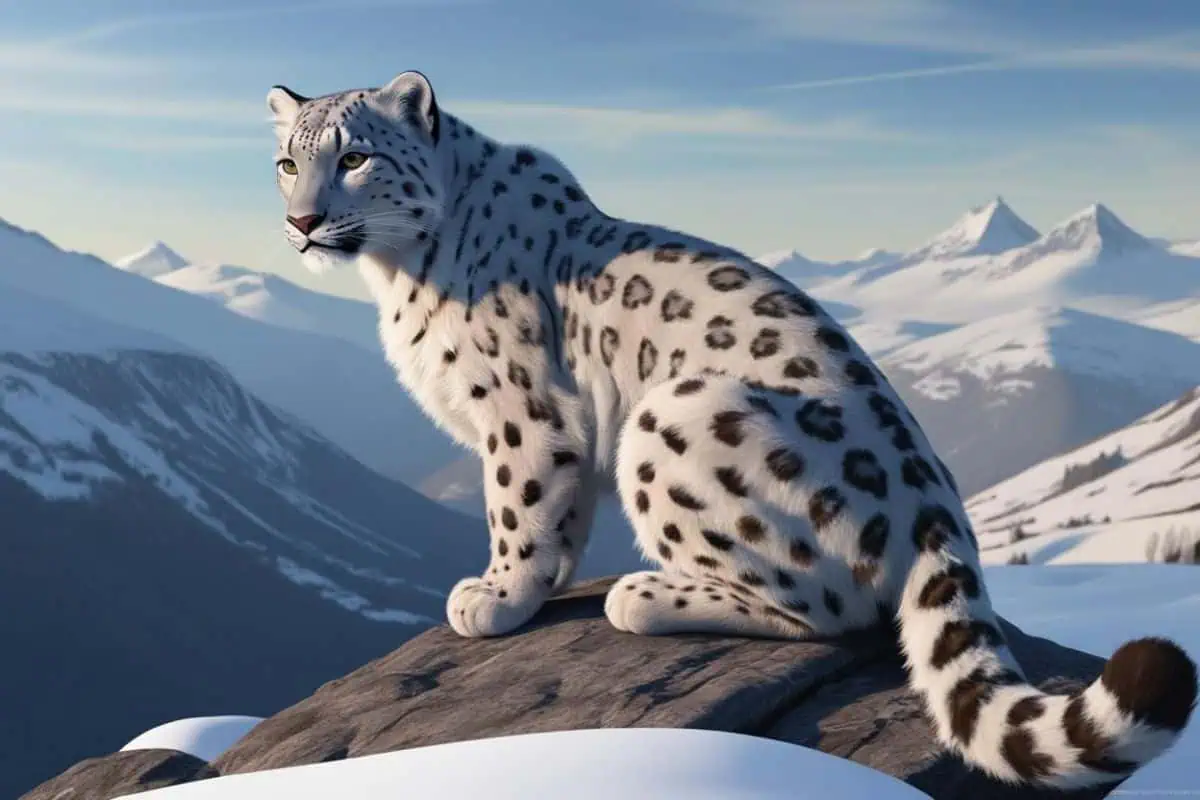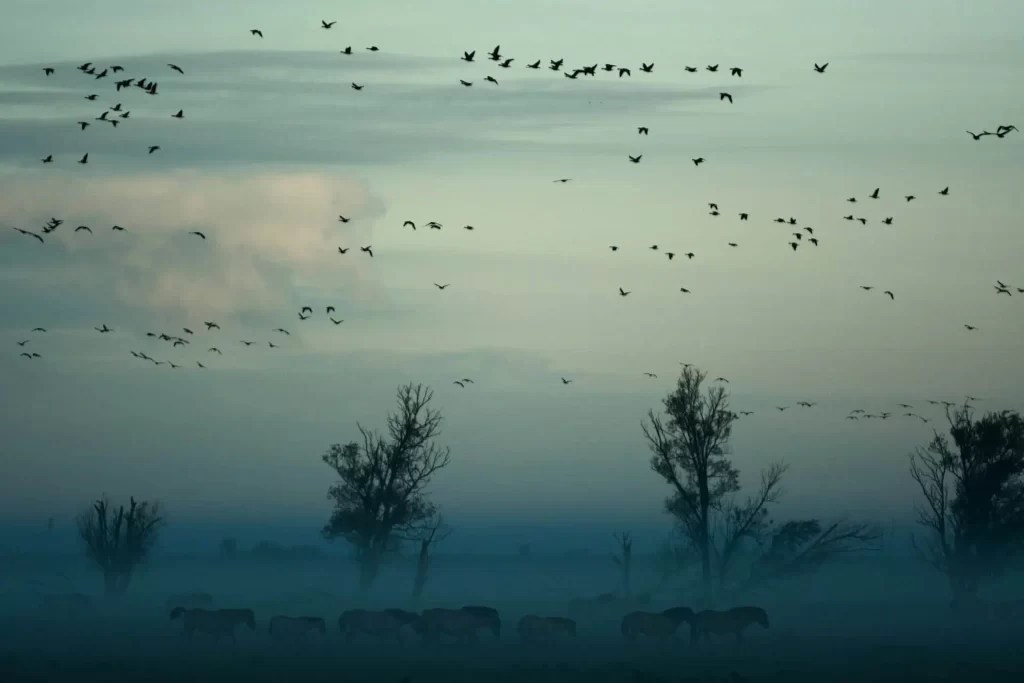Share:
Snow Leopard Fossils in Europe Reveal Climate Resilience

The snow leopard, an iconic species of the high-altitude Himalayas and the Tibetan Plateau, has long been seen as a solitary and elusive predator confined to the rugged terrain of central Asia. Known for its striking appearance and formidable hunting skills, this majestic cat is a symbol of the wild, capable of surviving in some of the harshest environments on Earth. However, recent fossil discoveries are reshaping our understanding of the species’ past and challenging the narrative that snow leopards are strictly mountain-dwelling creatures.
Uncovering Fossil Evidence in Europe
Scientists have uncovered fossil evidence that traces the snow leopard’s history far beyond its current range. A skull found in Manga Larga, Portugal, in the early 2000s suggests that these elusive felines once roamed across much of Europe during the Quaternary period, about 800,000 years ago. This discovery, far from the familiar landscape of the Tibetan Plateau, raises intriguing questions about the species’ evolutionary journey and its ability to adapt to varied and challenging environments.
While snow leopards are typically associated with steep, rocky slopes and cold, alpine ecosystems, this fossil evidence points to a much broader geographic presence in the past. Researchers now believe that snow leopards were not always restricted to high-altitude habitats, instead inhabiting a variety of ecosystems across Eurasia, from the frozen plateaus of Tibet to the temperate forests of Europe.
The Evolution of the Snow Leopard
The snow leopard’s current range is a reflection of millions of years of evolution, shaped by climatic shifts and changing landscapes. As a species, it is well adapted to the frigid, mountainous environments of its modern habitat, with thick fur and large paws that help it traverse snowy slopes with ease. However, the fossil evidence suggests that the snow leopard’s evolutionary path was far more dynamic.
During the Middle and Late Pleistocene, approximately 500,000 to 10,000 years ago, snow leopards underwent rapid adaptation in response to environmental shifts. As the climate cooled, these big cats adapted not only to colder temperatures but also to new prey species and diverse habitats. The fossil skull found in Portugal is part of a larger body of evidence indicating that snow leopards expanded across different regions during periods of environmental change.
Fossil records indicate that snow leopards once roamed regions far beyond their current habitat, likely due to the diverse topography available to them. These areas, characterised by rocky landscapes, allowed the species to thrive in conditions that offered both shelter and ample hunting opportunities. This discovery underscores the snow leopard’s adaptability to environmental shifts, suggesting that it was capable of surviving changing climates and landscapes throughout history.
A Changing Climate and the Snow Leopard’s Decline
Today, the snow leopard faces an entirely different kind of challenge. Climate change, driven by human activity, is altering the landscape of its remaining habitats. Rising temperatures threaten to shrink the snow leopard’s home range, pushing them into increasingly higher altitudes where prey is becoming scarcer and competition more fierce. These environmental pressures are compounded by human encroachment on the land, as development and farming expand into previously untouched areas.
The fossil evidence provides valuable insights into how the snow leopard may respond to these modern-day challenges. Just as the species adapted to climatic changes during the Pleistocene, researchers are hopeful that understanding the animal’s evolutionary history will aid in designing conservation strategies that help it survive in the face of current threats.
Implications for Conservation Efforts
Understanding the snow leopard’s evolutionary history is crucial for informing contemporary conservation efforts. By recognizing the species’ capacity for adaptation, scientists can develop more effective strategies for protecting the animal’s future. For example, ensuring that the snow leopard has access to a variety of habitats and prey species could help increase its chances of survival as climate change continues to impact its environment.
The snow leopard’s ability to thrive in a range of ecosystems, as evidenced by these ancient fossils, could inspire new approaches to habitat preservation. Efforts to restore landscapes outside the species’ current range may allow snow leopards to gradually move into new areas, expanding their territories in response to the challenges posed by global warming.
A Rich and Resilient Legacy
This study highlights that factors such as climate, prey availability, and, most notably, the landscape—especially mountainous regions—are key to snow leopard habitats, potentially more so than altitude. This understanding is crucial for developing effective strategies for the conservation of this iconic species.
The discovery of snow leopard fossils in Europe challenges long-standing assumptions about the species’ geographic limits and highlights its remarkable evolutionary resilience. While today’s snow leopard may seem inextricably tied to the mountains of Central Asia, its past tells a different story—one of adaptation, expansion, and survival across vast and varied landscapes.
As the snow leopard faces unprecedented challenges from climate change and human encroachment, understanding its evolutionary history will be key to ensuring its future. The fossilised remains of this extraordinary cat remind us that its survival has always depended on its ability to adapt to the ever-changing world around it. With continued research and conservation efforts, we may still be able to safeguard the future of the snow leopard, just as it has managed to endure through countless millennia.
Source:
Qigao Jiangzuo et al., Insights on the evolution and adaptation toward high-altitude and cold environments in the snow leopard lineage. Sci. Adv. 11, eadp5243(2025).DOI: 10.1126/sciadv.adp5243






